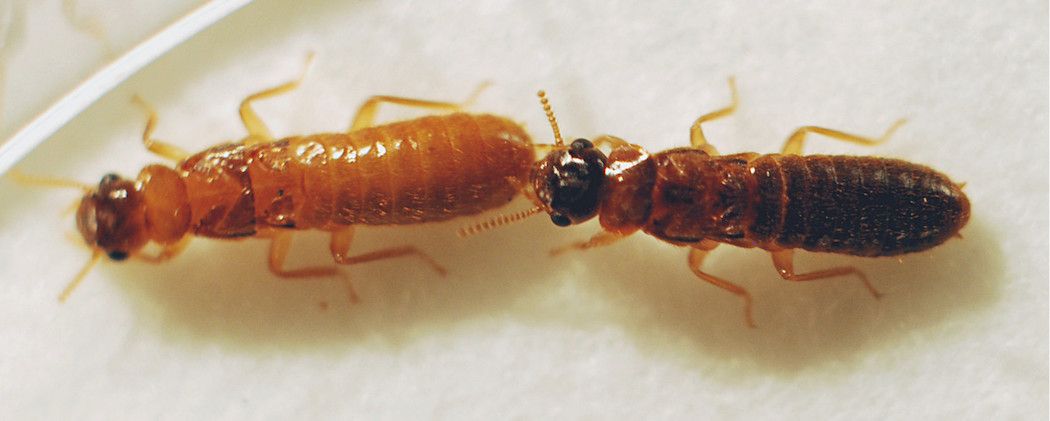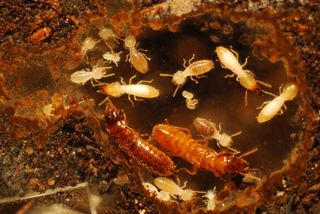'Super' Termite Hybrid May Wreak Havoc on Florida

The two most invasive termite species in the world are shacking up, producing a potentially powerful new termite hybrid in South Florida, a new study finds. The "super" pest can reproduce more quickly than either parent species and might have a larger range, opening it to new habitats, the researchers said.
Together, the Asian (Coptotermes gestroi) and Formosan (Coptotermes formosanus) subterranean termite species cause an estimated $40 billion worth of damage worldwide, the researchers said. The Asian termite is from tropical Southeast Asia, while the Formosan hails from the more temperate China and Taiwan. Both types of termite have evolved separately for hundreds of thousands of years, but now human movement and trade have brought the invasive species together in Taiwan, Hawaii and South Florida.
Researchers in South Florida have observed the two mating, raising concerns the hybrid offspring might have a temperature tolerance that stretches from North Carolina to Brazil, said the study's lead researcher, Thomas Chouvenc, an assistant research scientist of entomology at the University of Florida. [Real or Fake? 8 Bizarre Hybrid Animals (Photos)]
"That is the worst-case scenario," said Chouvenc, who has observed the hybrids growing in the lab.
In South Florida, the Asian termite typically mates in February, and the Formosan usually mates in April. But in March 2013, Chouvenc said he was "extremely surprised" when he found the two species mating at the same time.

It's possible that the warming climate has changed the termites' mating seasons, but more evidence is needed to find the root cause, he said.
Chouvenc took termites of both species back to the lab. When the two were placed together, the Asian males started chasing the female Formosan termites.
Sign up for the Live Science daily newsletter now
Get the world’s most fascinating discoveries delivered straight to your inbox.
"When I give them a choice between the two females, [the male Asian termite] actually prefers the female of the other species," Chouvenc told Live Science. "He completely ignores his own species."
The two species may be using the same mating pheromone, Chouvenc said, though he added that this hypothesis has yet to be tested. Perhaps, he speculated, the female Formosan produces slightly more of the pheromone than the female Asian termite, which would make the Formosan more desirable to males.
Also worrisome is the size of the hybrid brood, which was almost twice the size of either parent group, Chouvenc said. When the researchers observed a Formosan colony and an Asian colony that were kept separate in the lab, each colony had about 80 offspring after a year, Chouvenc said.
But when the Formosan mated with the Asian termites, their colony produced about 150 termites in a year. The researchers are currently replicating the experiment to see if they get the same results, Chouvenc said.
The researchers have a lot of work ahead of them. They hope to find out whether the hybrids will be able to reproduce, or if they are sterile like mules, Chouvenc said. Scientists are also curious about whether the hybrids have a colony in the wild, and how long the two species have been mating together.
"We don't know if it's a very recent event or if it's been happening for years," Chouvenc said.
Coptotermes termite colonies typically take about eight years to produce alates, which are winged males and females that swarm, mate, and then lose their wings before forming new colonies. If the hybrids cannot produce alates, they might "just be a very active termite colony that can eat houses, but not keep going for the next generation," Chouvenc said.
The new study details a "fascinating situation" and "a sobering picture," said Ed Vargo, a professor of entomology at Texas A&M University, who was not involved in the study.
"You have the two most destructive subterranean termite species in the world, and here they are, brought together through human activity, being introduced together in a place where they're not native, and they're hybridizing," Vargo said.
The findings were published online on March 25 in the journal PLOS ONE.
Follow Laura Geggel on Twitter @LauraGeggel. Follow Live Science @livescience, Facebook & Google+. Original article on Live Science.

Laura is the archaeology and Life's Little Mysteries editor at Live Science. She also reports on general science, including paleontology. Her work has appeared in The New York Times, Scholastic, Popular Science and Spectrum, a site on autism research. She has won multiple awards from the Society of Professional Journalists and the Washington Newspaper Publishers Association for her reporting at a weekly newspaper near Seattle. Laura holds a bachelor's degree in English literature and psychology from Washington University in St. Louis and a master's degree in science writing from NYU.









